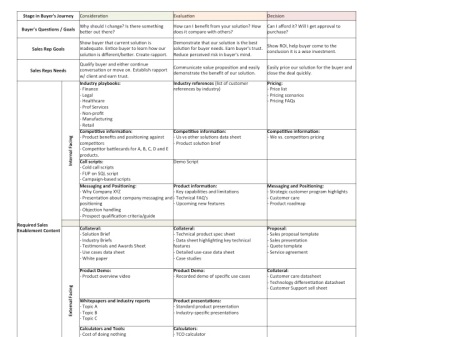 Last week I attended a webinar presented by SiriusDecisions and Alinean titled “ SiriusDecisions Interview: Death of the B2B Sales Rep?”. It basically reinforced some concepts I already knew and presented some new interesting stats from the research that SiriusDecisions has done recently.
Last week I attended a webinar presented by SiriusDecisions and Alinean titled “ SiriusDecisions Interview: Death of the B2B Sales Rep?”. It basically reinforced some concepts I already knew and presented some new interesting stats from the research that SiriusDecisions has done recently.
If you know anything about SiriusDecisions these guys are the top analysts when it comes to B2B sales and marketing. Here’s what you need to know about the content they presented:
- Don’t believe the 67% stat quoted everywhere
- Sales people matter more than your digital assets
- Your sales enablement and content marketing plans need adjustment
- Train sales reps on value, not on product features
OK, let’s dive into each one.
Don’t believe the 67% stat quoted everywhere
You’ve seen and heard this multiple times. I sure am guilty of mysquoting it once or twice and I have recently heard a VP say it like it was the new gospel. “67% of the buyer’s journey is now done digitally” is the actual quote from SiriusDecisions from back in 2013 that people misuse thinking you should focus your marketing on creating digital assets, leveraging marketing automation, inbound marketing and that by the time the prospect engages with your sales team they have done most of the research, diminishing the role of the sales rep to a mere order taker.
SiriusDecisions published a must-read blog post dispelling the myth and setting the record straight noting that:
a) The 67% statistic doesn’t say that buyers don’t engage with sales people in the early stages of the buying journey, it simply says buyers are spending more time online (note it also doesn’t say that the 67% is related to the early stages, in fact it is spread throughout the sales cycle);
b) Just because buyers are doing research online it doesn’t mean you have to wait for them before you engage;
c) You need to understand what’s really happening online and tailor your inbound strategy accordingly.
Sales people matter more than your digital assets
According to SiriusDecisions 2015 Buyer Study, buyers classify “sales presentations” more meaningful or impactful than the traditional marketing assets like whitepapers, infographics, eBooks and Webinars during their buying process. In fact, sales presentations were ranked top next to analyst reports and followed closedly by case studies and articles/publications.
How do you get to see ‘sales presentations’? By engaging a sales rep. The top three contents ranked by the companies answering the survey have the same thing in common: they all answer “what value am I going to get from the solution?” question.
Your sales enablement and content marketing plans need adjustment
The key takeaway from the research is that you may have to review your sales enablement and content marketing plans. How much time are you spending creating truly captivating sales presentations? Is your content focused on promoting the product features or in showing value?
Also important is the notion of risk. Every purchase decision involves risk analysis and if you are able to minimize the perceived risk in the eyes of the buyer, you get ahead of the competition. Risk is shown in many forms, like technology risk, financial risk, user acceptance, and more. Depending on what you are selling you need to adjust the messaging to focus on the types of risks more important to the buyer.
Train sales reps on value, not on product features
According to the research presented, most sales reps have trouble selling the value of their solutions. Just listen to a few sales calls and you will listen to a variety of messages from different sales reps. Some will pitch the technology, others will go strong on pricing, some will focus on dissing competitors… it never changes. The problem is not just with the sales team, is with how you are training them.
I know this first hand. Tell someone in sales how to pitch the product and it almost guarantees they will do a different way. But you have to insist and enlist the help of the senior sales reps and execs to make sure they support the key messaging and value proposition you are creating in marketing and why the sales decks were created this way.
When a new product or new product release is being announced to the team, pay special attention to how you can translate the technical features in customer value and announce it that way. Retraining the sales team, making them shift their approach is one of the hardest things, but it gotta be done.
The Shift In Sales
The fact that buyers are doing research on their own doesn’t diminish the value of the sales rep, it actually makes the sales person way more important and doing an extremely difficult job. But by arming the sales team with the right messaging, the right tools and catering the tools to different stages in the sales cycle you will be increasing the value the sales person in your organization delivers to the prospect at each step of the way.



 Posted by Daniel Kuperman
Posted by Daniel Kuperman 





